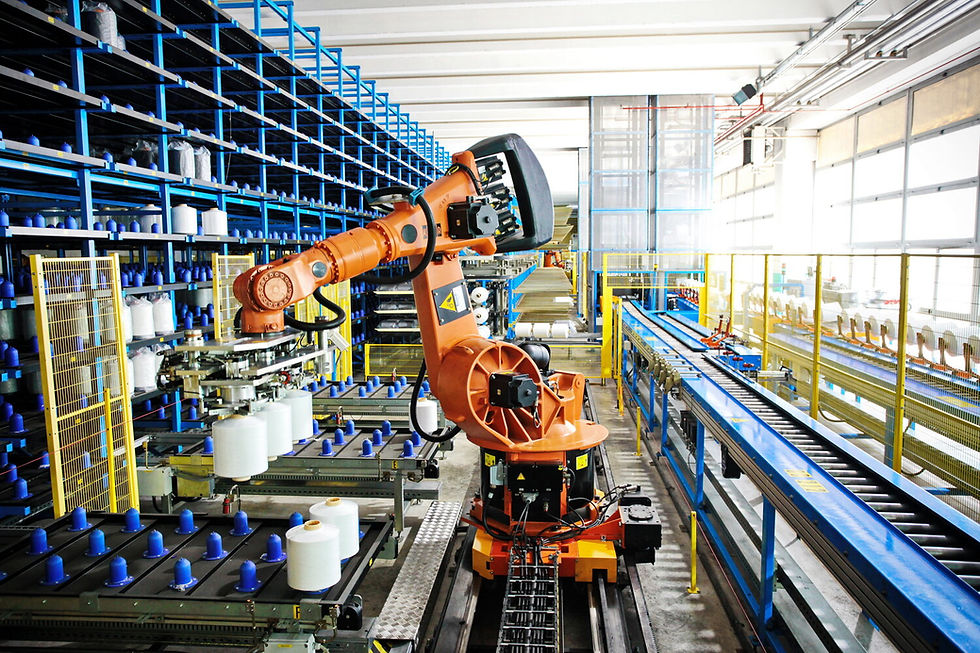Using Integrated Safety Reviews for Managing Risks for Robot Systems
- ORS

- Dec 10, 2020
- 3 min read
Updated: Jan 9, 2025
In this article:

The use of industrial robots is becoming the new normal in most sectors. Manufacturing, oil and gas, shipping, and transportation are just some examples. You can use integrated safety reviews to make these systems both safer and more efficient.
Industrial robots do not come without risks
A global trend is the increased use of stand-alone, industrial robots. You can be either fix them in place or they can be mobile for use in industrial automation applications. Further, recent trends are introducing collaborative robots. They work simultaneously together with human workers in the same collaborative working space, improving process ergonomics for the operator. The increased use of collaborative robots, with either robot-robot or robot-operator interaction, introduces more complex hazard scenarios with potential for injuries, material damage, or production upsets.
One example of a robot-robot interaction is a production process where the first robot is lifting raw material from a pallet to a second robot. The second robot is designed to perform initial scanning. This scanning checks that the quality requirements are met and disposes of defective material accordingly.
You use Failure Modes, Effects, and Criticality Assessments (FMECA) as one of the main risk assessment methods for industrial robot processes. This is an effective method to assess different ways a robot may fail. Additionally, to evaluate the reliability and robustness of safeguards. However, FMECA is less efficient to cover more complex scenarios for integrated operations, interactions between equipment, and evaluating the cascading effect potential. Hence, we recommend combining the FMECA with integrated safety risk assessments. The reason why is to cover risks related to the human-machine or machine-machine interfaces.
Assessing Risks with Integrates Safety Reviews (ISR)
Simply put, Integrated Safety Reviews (ISR) is a risk assessment. It is tailormade to focus on integrated operations and interactions between industrial robots, as well as between robots and operators. Further, ISR is suitable to de-bottleneck processes, improve uptime, and minimize the risk for personnel injuries. The ISR is based on ISO 12100 for the safety of machinery in general as well as ISO 10218-1 and ISO 10218-2 for collaborative robots.
The key principle for the ISR is to identify and assess all handshakes within a process. A handshake is the point of interaction between robots and/or operators. Coming back to the two robots from the example above, the handshake occurs when robot 1 transported the material into the vicinity of robot 2 while still holding the entire load of the raw material, and then handing over the entire load to robot 2, which subsequently after taking over the entire load, proceeds with the material scanning.
Identifying hazard scenarios
During the ISR, you should assess each of these handshakes. You do this to identify possible hazard scenarios, and how this can affect safety and efficiency. This hazard identification is structured using a tailormade set of guidewords. As an integrated evaluation, you use supporting FMECAs actively during the ISR. This is to confirm that identified protective and mitigating safeguards (such as SIL-rated functions) are relevant, reliable, and effective for the identified hazards.
If we envision the handover of a pipe from one robot to the next, the following hazards could occur:
Failed transfer, the robots lose the pipe between themselves. Falling object, potential damage to close by or underneath located equipment, or personnel injuries.
Faulty indication, robot 1 assumes the weight is transferred and moves back to the start position, while still holding the pipe together with robot 2. Potential equipment damage to robot 1 or 2 through opposing movements while attached to the same pipe.
The ISR methodology is based on handshakes. Therefore, you can easily customize it to all processes and industries involving industrial robots. This allows to-the-point risk assessments to contribute to reduced risks and enhanced uptime. Ultimately, the ISR methodology is all about assessing the need for reduced risk, and how you can achieve this. Such mitigating measures could be related to improving system reliability, improving safeguards, implementing physical restrictions, or improving operating and maintenance procedures.
Would you like to know more about Integrated Safety Reviews?
ORS Consulting is supporting stakeholders in multiple sectors. Any comments? Or perhaps you would like advice and assistance? Feel free to reach out to us and we will try to help you.



